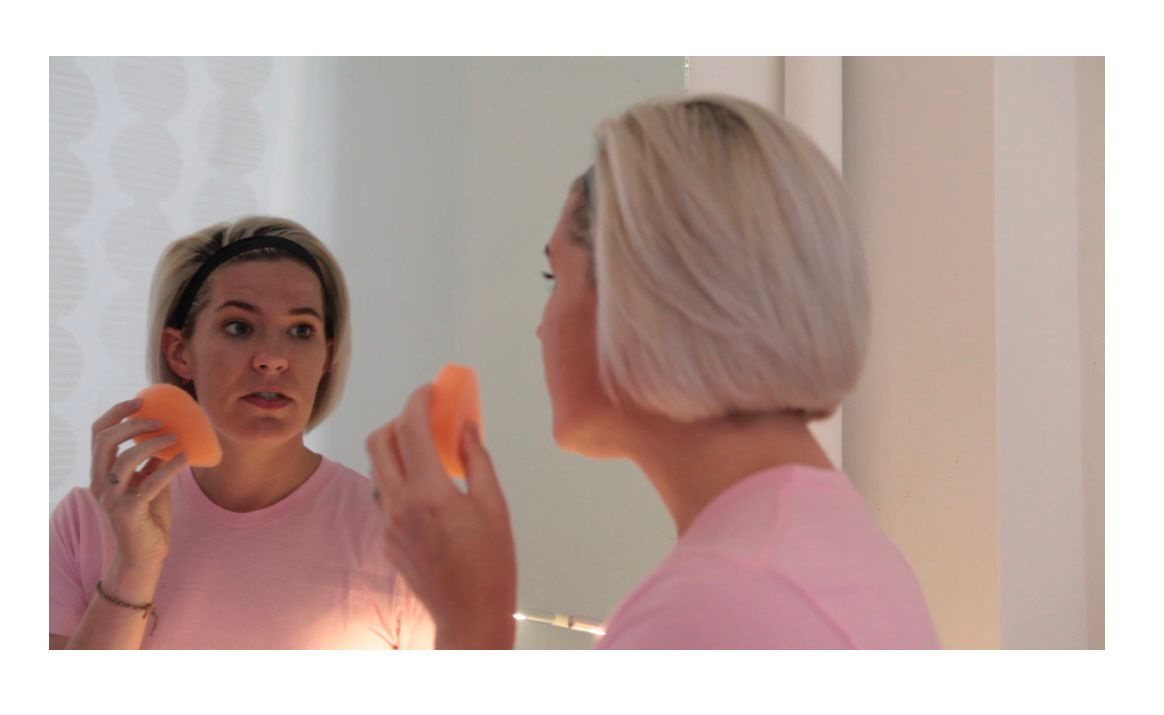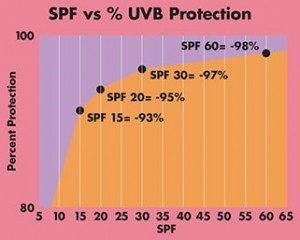Developed in 1975 by Thomas B. Fitzpatrick, a Harvard dermatologist, as a way to classify the typical response of different types of skin to ultraviolet light, the Fitzpatrick scale remains a recognized tool for dermatological research into human skin pigmentation.
Take the quiz below to discover what your type is. Total all the numbers up to get your final score. Then review your results below.
Part I – Genetic Disposition
Your eye color is:
Light blue, light gray or light green = 0
Blue, gray or green = 1
Hazel or light brown = 2
Dark brown = 3
Brownish black = 4
Your natural hair color is:
Red or light blonde = 0
Blonde = 1
Dark blonde or light brown = 2
Dark brown = 3
Black = 4
Your natural skin color (before sun exposure) is:
Ivory white = 0
Fair or pale = 1
Fair to beige, with golden undertone = 2
Olive or light brown = 3
Dark brown or black = 4
How many freckles do you have on unexposed areas of your skin?
Many = 0
Several = 1
A few = 2
Very few = 3
None = 4
Total score for genetic disposition: _______
Part II – Reaction to sun exposure
How does your skin respond to the sun?
Always burns, blisters and peels = 0
Often burns, blisters and peels = 1
Burns moderately = 2
Burns rarely, if at all = 3
Never burns = 4
Does your skin tan?
Never — I always burn = 0
Seldom = 1
Sometimes = 2
Often = 3
Always = 4
How deeply do you tan?
Not at all or very little = 0
Lightly = 1
Moderately = 2
Deeply = 3
My skin is naturally dark = 4
How sensitive is your face to the sun?
Very sensitive = 0
Sensitive = 1
Normal = 2
Resistant = 3
Very resistant/Never had a problem = 4
Total score for reaction to sun exposure: _______
Add (genetic disposition) and (sun exposure) totals to find your Fitzpatrick Skin Type: ___________________
~Results~

Skin Type I
- A score of 0 – 6 using the Fitzpatrick chart questions.
- Unexposed skin that is white
- Blue or light colored eyes
- White or very fair skin and freckles
Skin Photo Type I tans little or not at all, burns easily and severely, and then peels.
Individuals with Skin Photo Type I do not have the ability to create natural protection from ultraviolet exposure, and are particularly susceptible to burning and damage from UV radiation.

Skin Type II
- A score of 7 – 13 using the Fitzpatrick chart questions.
- Fair skin
- Blue or hazel eyes
- Naturally blonde, light brown or red hair
Skin Photo Type II usually burns easily and severely (painful burn), and tans minimally and lightly.Individuals with Skin Photo Type II are not recommended to use a tanning unit.

Skin Type
- A score of 14 – 20 using the Fitzpatrick chart questions.
- Light brown skin
- Blue or hazel* eyes
- Brown hair
- Unexposed skin that is white
Skin Photo Type III burns moderately, and usually develops an average tan

Skin Type IV
- A score of 21 – 27using the Fitzpatrick chart questions.
- Moderate brown skin
- Dark-brown hair
- Dark eyes
- Unexposed skin that is white or light brown, and
Skin Type IV burns minimally, tans easily with each exposure and exhibits immediate pigment darkening.

Skin Type V
- A score of 28 – 34 using the Fitzpatrick chart questions
- Dark brown skin
- Dark-brown hair
- Dark eyes
- Unexposed skin that is light brown
Skin Type V rarely burns, tans easily and substantially, and always exhibits immediate pigment darkening

Skin Type VI
- A score of 35+ using the Fitzpatrick chart questions
- Naturally very dark brown – black skin
- Dark-brown – black hair
- Dark eyes
- Unexposed skin that is brown
Skin Type VI, tans easily, never burns and exhibits immediate pigment darkening.

From the Skin Cancer Foundation
Fitzpatrick I-IV
You are susceptible to skin damage as well as cancers like basal cell carcinoma and squamous cell carcinoma. You are also at high risk for melanoma, the deadliest type of skin cancer. Generally follow The Skin Cancer Foundation’s prevention tips but also consider using a sunscreen with a SPF of 30+ and clothing with a UPF rating of 30 or higher. Seek the shade whenever you are out in the sun. Check your skin head-to-toe each month, paying careful attention to any suspicious growths, and make sure you have an annual professional skin checkup.
Fitzpatrick V and VI
Acral lentiginous melanoma, a very virulent form of melanoma, is more common among darker-skinned people. These melanomas tend to appear on parts of the body not often exposed to the sun, and often remain undetected until after the cancer has spread. Check your skin head-to-toe each month, paying careful attention to any suspicious growths, and make sure you have an annual professional skin checkup. Keep an eye out for any suspicious growths, especially on the palms, soles of the feet and mucous membranes.
What About Getting Proper Vitamin D Production From the Sun Though?!
According to the United States National Library of Medicine (NLM), a branch of the National Institutes of Health; “For most white people, a half-hour in the summer sun in a bathing suit can initiate the release of 50,000 IU (1.25 mg) vitamin D into the circulation within 24 hours of exposure; this same amount of exposure yields 20,000–30,000 IU in tanned individuals and 8,000–10,000 IU in dark-skinned people.”
It is currently debated though there is accumulating medical evidence, that sun exposure is a very important aspect of our health in multiple aspects. Some professionals recommend an half hour of sun exposure every day. As well, dark-skinned people do need more sun exposure than light-skinned people.

We are happy to announce that Stephanie Burns is back on a regular part time schedule if you would like to book with her! She is available every other Saturday and every Friday, last appointment at 6:15. Btw-she’s a Fitzpatrick III!
Don’t forget you can now bookOn Line!




